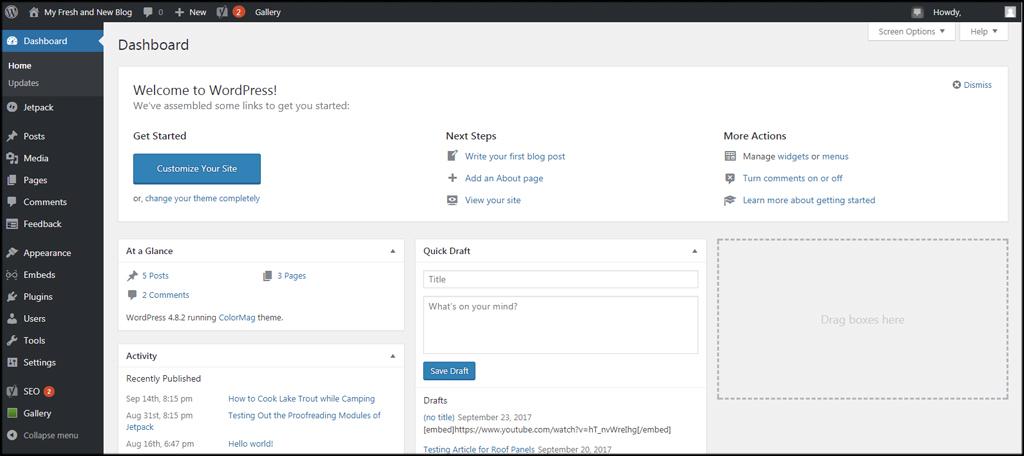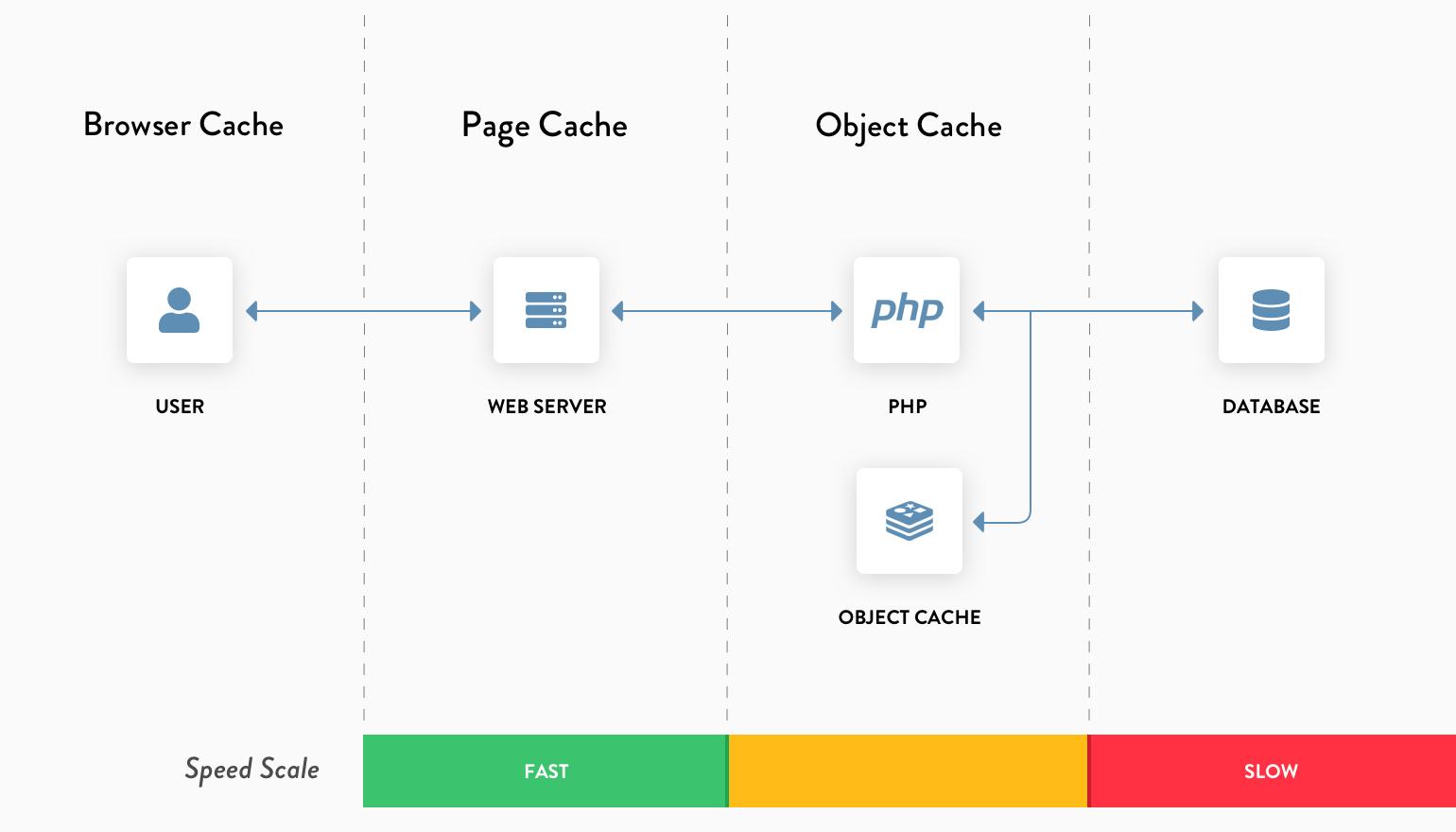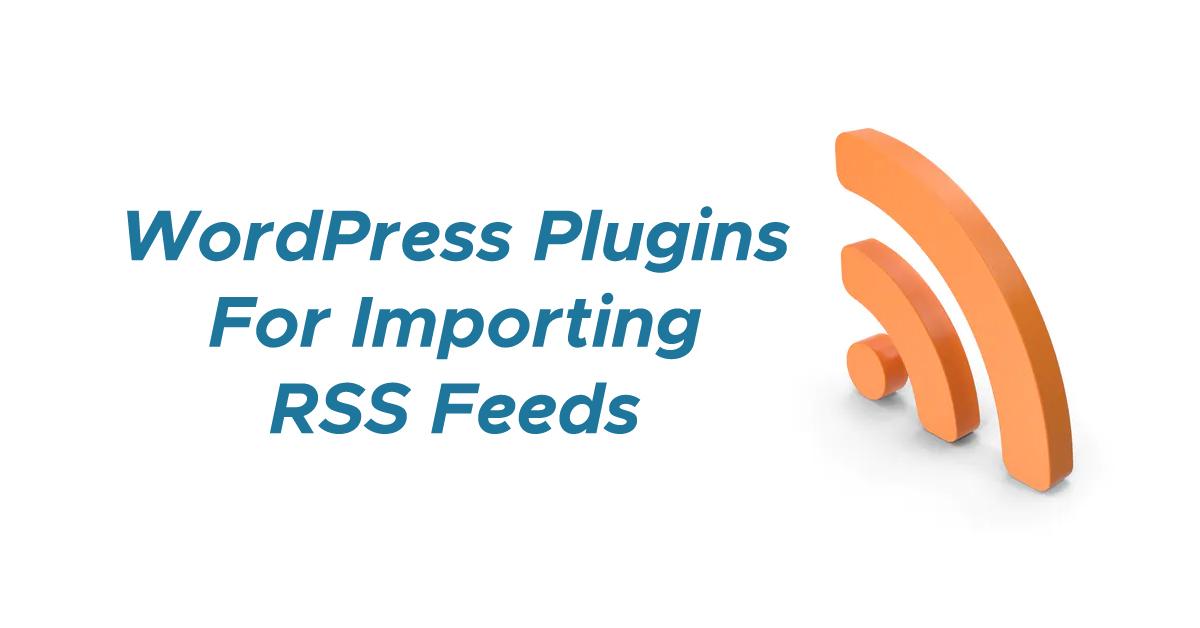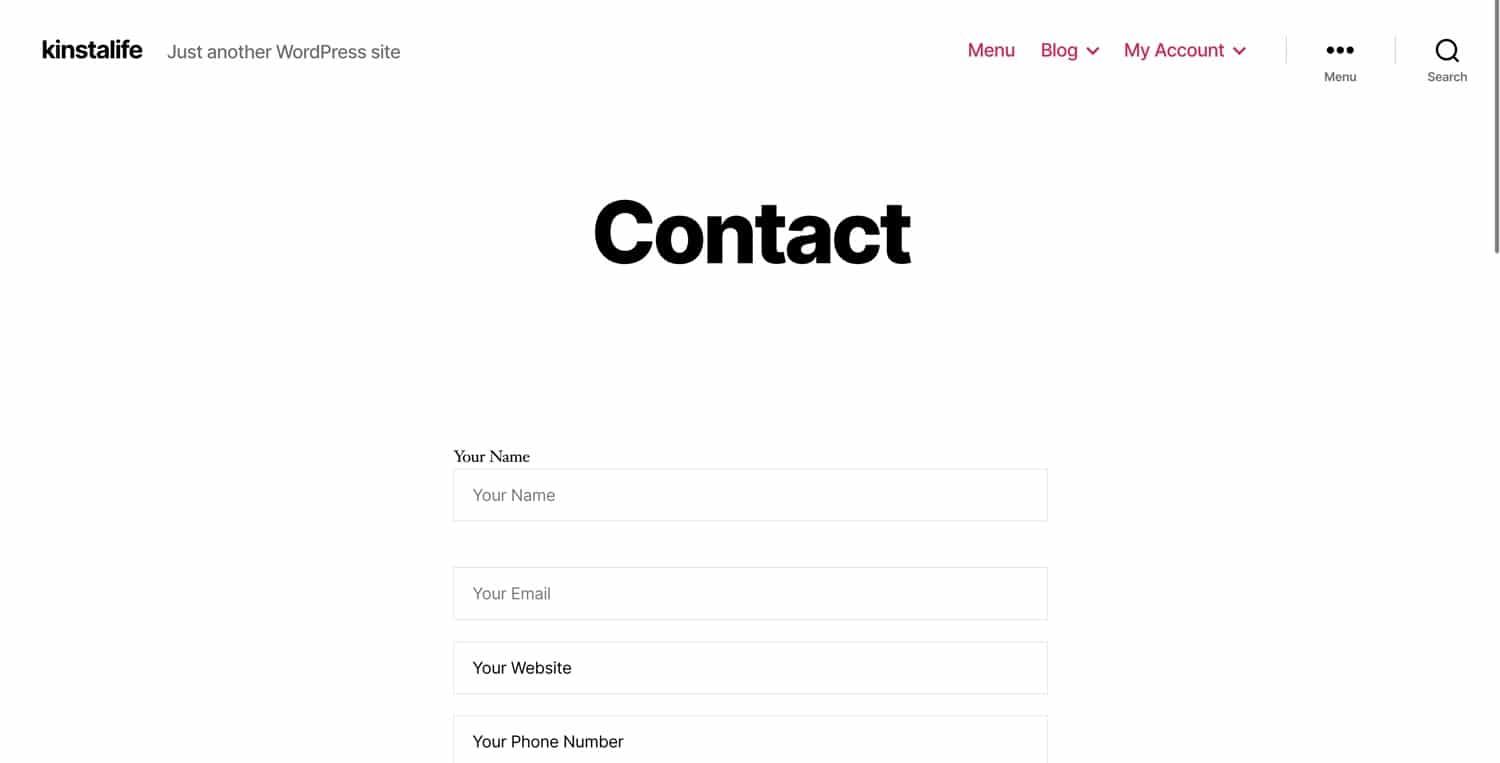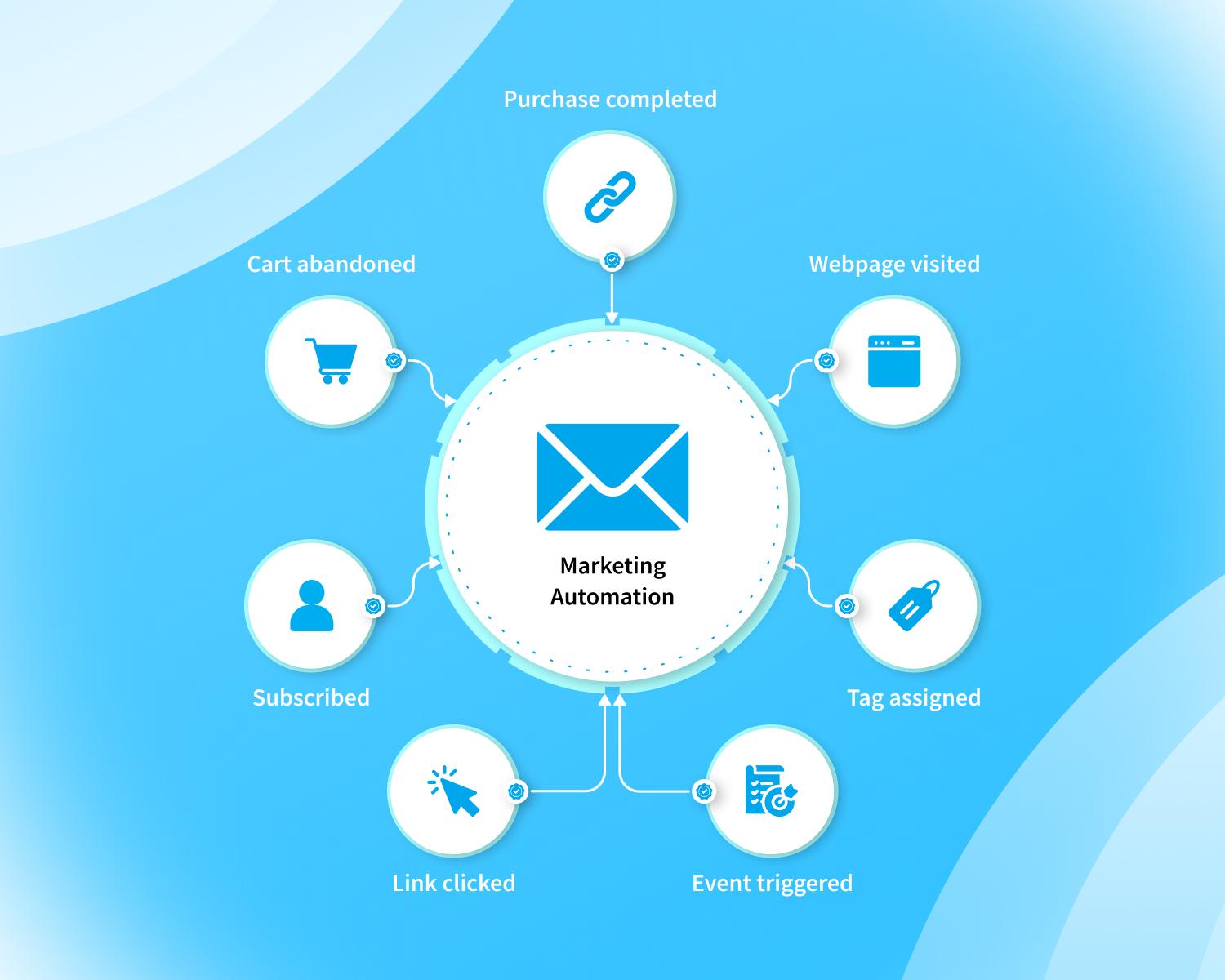
In today’s fast-paced digital landscape, where every second counts, marketers are constantly on the lookout for ways to streamline their processes and maximize their impact. If you’re tired of drowning in repetitive tasks and wish you could focus more on strategic thinking and creativity, you’re in the right place! Enter automation plugins – the unsung heroes of modern marketing. These nifty tools can take your campaigns to the next level, saving you time, reducing errors, and even boosting your ROI. In this article, we’ll explore the top five automation plugins that can revolutionize your marketing efforts. Whether you’re a seasoned pro or just starting out, these tools will empower you to work smarter, not harder. Ready to transform your marketing game? Let’s dive in!
Exploring the Power of Automation Plugins for Marketing Success
In the fast-paced world of digital marketing, efficiency is key. Automation plugins can streamline your processes, freeing up valuable time for you to focus on what really matters—crafting compelling marketing strategies and building relationships with your customers. With the right tools, you can enhance your workflow, maximize your reach, and ultimately drive better results.
One of the most significant benefits of automation plugins is their ability to improve lead management. Imagine having a system that automatically captures, qualifies, and nurtures leads without manual intervention. Several plugins allow you to set up personalized email sequences based on user behavior, ensuring that your audience receives timely and relevant information. This not only keeps your leads engaged but also increases the chances of conversion.
Another powerful feature is the ability to analyze and optimize campaigns. Automation plugins often come equipped with analytics tools that provide insights into your marketing efforts. For instance, you can track open rates, click-through rates, and conversion rates in real time. This data is invaluable for identifying what works and what doesn’t, allowing you to make informed adjustments to your campaigns.
Integration is also crucial in the world of automation. Many popular plugins seamlessly connect with your existing tools, be it CRM systems, social media platforms, or content management systems. This means you can have a unified approach to your marketing strategies. Here are a few integrations to consider:
- Email Marketing: Integrate with platforms like Mailchimp or Sendinblue.
- Social Media: Connect to Hootsuite or Buffer for scheduled posts.
- Analytics: Use Google Analytics for enhanced tracking and reporting.
Moreover, automation plugins can significantly enhance your customer engagement. Features like chatbots and automated responses can help you provide immediate support to your customers, addressing their questions and concerns 24/7. This not only improves customer satisfaction but also reduces the workload on your customer service team.
To give you a clearer idea, let’s take a look at how some popular automation plugins stack up against each other:
| Plugin | Lead Management | Analytics | Integrations |
|---|---|---|---|
| OptinMonster | Yes | Basic | Multiple |
| Mailchimp | Advanced | Comprehensive | Extensive |
| Zapier | No | No | Unlimited |
| HubSpot | Yes | Advanced | Multiple |
Ultimately, the right automation plugin will depend on your unique marketing goals and the specific needs of your business. Investing in such tools not only enhances your operational efficiency but also enables you to stay ahead of the competition. With the right automation strategy in place, you’re not just keeping up; you’re setting the pace for marketing success.

Why Automation is a Game Changer for Your Marketing Strategy
In today’s fast-paced digital landscape, the ability to automate various aspects of your marketing strategy can be a crucial differentiator. Imagine being able to streamline repetitive tasks, engage more effectively with your audience, and analyze data in real-time—all while freeing up your valuable time. Automation doesn’t just make your life easier; it opens up new avenues for creativity and innovation in your campaigns.
One of the standout benefits of marketing automation is its ability to provide personalization at scale. With automation tools, you can segment your audience based on their behavior, preferences, and engagement levels, allowing you to deliver tailored messages. This targeted approach not only increases the relevance of your communications but also boosts conversion rates. Consumers today crave personalization, and automation enables you to meet that demand without overwhelming your team.
Another compelling reason to embrace automation is the enhanced efficiency it brings to your marketing efforts. Tasks such as email marketing, social media posting, and lead nurturing can be set on autopilot. This means you can maintain a consistent presence without the constant manual effort. As a result, your team can focus on strategic initiatives, brainstorming new ideas, and analyzing performance metrics instead of getting bogged down by repetitive tasks.
Additionally, automation tools come equipped with robust analytical capabilities that provide insights into campaign performance. Imagine having access to real-time data that shows which strategies are working and which aren’t. This allows for quick adjustments and optimizations, ensuring you’re always getting the best return on your investment. Furthermore, these insights can inform future campaigns, creating a feedback loop that drives continuous improvement.
Moreover, integrating automation into your marketing strategy can lead to better lead management. With automated lead scoring and nurturing, you can ensure that your sales team is focused on the most promising prospects. By tracking engagement and interactions, you can identify when leads are ready to convert, ensuring that you maximize your sales potential. This seamless handoff between marketing and sales not only increases efficiency but also fosters collaboration between teams.
| Benefit | Description |
|---|---|
| Personalization | Targeted messages based on audience behavior. |
| Efficiency | Automated tasks allow focus on strategy. |
| Analytics | Real-time data for campaign adjustments. |
| Lead Management | Prioritize leads to improve conversion rates. |
let’s not overlook the increased ROI that comes with effective automation. By optimizing your marketing processes, you can reduce operational costs and allocate resources more wisely. This alignment of efforts translates into a higher return on investment, enabling you to achieve your marketing goals without breaking the bank.
Incorporating automation plugins into your marketing strategy is not just a trend; it’s a necessity in today’s competitive environment. By embracing these tools, you not only enhance your operational efficiency but also elevate your marketing efforts to new heights. This is the time to rethink your strategies and leverage automation to redefine what success looks like for your business.

Key Features to Look for in Marketing Automation Plugins
When selecting a marketing automation plugin, there are several pivotal features that can make or break your choice. The right plugin not only streamlines your marketing efforts but also maximizes your return on investment. Here are some essential features to consider:
- User-Friendly Interface: An intuitive dashboard ensures that you and your team can navigate the tool effortlessly. A clutter-free design with drag-and-drop functionality makes it easier to create campaigns without needing extensive technical skills.
- Integration Capabilities: Look for plugins that seamlessly integrate with your existing platforms, such as CRM systems, social media, and eCommerce solutions. This capability ensures that you can manage all your marketing efforts from a single location.
- Segmentation and Targeting: Advanced segmentation tools allow you to categorize your audience based on behavior, demographics, and interests. This feature enables personalized messaging, which can significantly enhance engagement rates.
- Analytics and Reporting: Comprehensive analytics tools provide insights into campaign performance. Look for features that allow you to track key metrics such as open rates, click-through rates, and conversions to help refine your strategies.
- Automation Triggers: The ability to set automation triggers based on user actions—like signing up for a newsletter or abandoning a cart—can help nurture leads effectively. This feature allows your marketing efforts to be timely and relevant.
Additionally, consider the following:
| Feature | Importance | Benefit |
|---|---|---|
| Multi-Channel Campaigns | High | Engage customers across various platforms |
| Real-Time Notifications | Medium | Immediate response to user actions |
| Template Library | Low | Save time with pre-designed templates |
| Customer Support | High | Assistance when you need it most |
Lastly, ensure that the plugin offers scalability. Your marketing needs may evolve over time, and a plugin that can grow with your business will save you the hassle of switching solutions down the road. Look for plugins that offer tiered pricing plans or customizable features that can adapt to your changing requirements.
By keeping these key features in mind, you can select a marketing automation plugin that not only meets your immediate needs but also sets the foundation for successful, long-term marketing strategies. Stay focused on your goals, and choose wisely!

Unveiling Our Top Picks for Automation Plugins
When it comes to automating your marketing efforts, the right plugins can make all the difference. Here’s a look at some of the standout options that can streamline your processes, boost your productivity, and ultimately help you achieve your marketing goals.
1. Zapier
Zapier is a powerhouse in the automation world, linking over 2,000 web applications. With its user-friendly interface, you can create “Zaps” to automate repetitive tasks without writing a single line of code. Whether you need to:
- Sync your email marketing lists
- Automatically post social media updates
- Transfer leads between your CRM and marketing platform
Zapier handles it all seamlessly, allowing you to focus on strategy rather than mundane tasks.
2. Mailchimp
Mailchimp isn’t just an email marketing tool; it’s a full-fledged automation suite. With Mailchimp, you can create automated email campaigns that trigger based on user behavior, such as:
- Welcome emails for new subscribers
- Reminder emails for abandoned carts
- Follow-up messages after purchases
This level of personalization keeps your audience engaged and increases conversion rates.
3. HubSpot Marketing Hub
HubSpot offers a comprehensive marketing automation solution that integrates seamlessly with your entire marketing strategy. Key features include:
- Lead scoring to prioritize your outreach
- Automated social media posting
- Email workflows for nurturing prospects
With its robust analytics, you can track performance and refine your strategies for maximum impact.
4. ActiveCampaign
For businesses focused on email marketing, ActiveCampaign provides advanced automation features that help you craft personalized experiences. Its strengths lie in:
- Customer segmentation for targeted messaging
- Automated follow-ups based on user actions
- Integration with CRMs and ecommerce platforms
This makes it an ideal choice for those looking to deepen their customer relationships and improve retention rates.
5. Automate.io
Similar to Zapier, Automate.io lets you connect your favorite web apps to automate workflows. What sets it apart is its visual interface that allows you to design complex workflows with ease. You can:
- Automate data entry tasks
- Connect apps like Google Sheets and Slack
- Create multi-step workflows for intricate processes
This flexibility can significantly reduce manual labor, freeing you to focus on creative marketing strategies.
Comparison Table
| Plugin | Key Features | Best For |
|---|---|---|
| Zapier | 2,000+ integrations, user-friendly Zaps | Connecting apps without coding |
| Mailchimp | Email automation, behavior triggers | Email marketing campaigns |
| HubSpot Marketing Hub | Lead scoring, comprehensive analytics | All-in-one marketing solution |
| ActiveCampaign | Advanced segmentation, follow-ups | Deepening customer relationships |
| Automate.io | Visual workflow design, multi-step processes | Custom workflow automation |

Boost Your Email Campaigns with Smart Automation Tools
In the fast-paced world of digital marketing, leveraging automation tools can be the secret ingredient to elevate your email campaigns. Imagine sending out personalized messages to thousands of subscribers without lifting a finger. The right automation plugins not only save you time but also enhance the relevance and impact of your communications.
Here are some powerful features you should look for in automation plugins:
- Segmentation: The ability to divide your audience into specific groups based on their behaviors, preferences, and demographics allows for targeted messaging.
- Triggered Emails: Automate responses based on user actions, such as welcome emails for new subscribers or follow-ups after purchases.
- Analytics and Reporting: Track performance metrics in real-time to refine your strategies and improve future campaigns.
- A/B Testing: Experiment with different subject lines, content, and send times to discover what resonates best with your audience.
Choosing the right plugin can feel overwhelming with numerous options available. Here’s a quick comparison of five top contenders:
| Plugin | Key Features | Pricing |
|---|---|---|
| Mailchimp | Segmentation, A/B Testing, Analytics | Free for up to 2,000 subscribers |
| ActiveCampaign | Triggered Emails, CRM Integration | Starts at $9 per month |
| ConvertKit | Landing Pages, Automation Workflows | Free for up to 1,000 subscribers |
| MailerLite | Drag-and-Drop Editor, Campaign Reports | Free for up to 1,000 subscribers |
| HubSpot | CRM Tools, Email Marketing, Reporting | Free with limited features |
Integrating these automation tools into your strategy means more than just efficiency; it’s about creating meaningful connections with your audience. When subscribers receive content tailored to their interests and behaviors, they are more likely to engage, convert, and remain loyal.
Furthermore, consider the impact of time-based automation. Schedule emails to reach your audience at optimal times based on their engagement patterns, ensuring your messages are received when they’re most likely to be read. This small adjustment can significantly increase open rates and overall campaign success.
never underestimate the power of a well-designed email. Visual aesthetics combined with compelling copy can make your automated emails stand out in crowded inboxes. Use plugins that allow for easy customization and testing of designs to find out what works best for your brand.
Streamline Your Social Media Management Effortlessly
In the fast-paced world of digital marketing, managing your social media accounts can often feel overwhelming. Fortunately, with the right automation plugins, you can simplify your workflow and focus on what truly matters—creating engaging content and connecting with your audience. Here are some top-notch plugins that can elevate your marketing game with minimal effort.
- Buffer: This user-friendly scheduling tool allows you to queue up posts across various platforms, so you can maintain a consistent online presence without the daily hassle. With its analytics feature, you can track engagement metrics to refine your strategy over time.
- Hootsuite: A powerhouse for social media management, Hootsuite lets you manage multiple accounts from one dashboard. Its robust features include scheduling, monitoring conversations, and analyzing performance, making it a comprehensive solution for marketers.
- SocialBee: Tailored for small businesses and digital marketers, SocialBee offers content categorization that allows you to focus on specific themes or campaigns. You can recycle evergreen content, ensuring your audience always has something to engage with.
- Revive Old Posts: This unique plugin breathes new life into your older content by automatically sharing it on social media. It helps drive traffic to your website and keeps your social feeds active, all while you focus on creating new content.
- Zapier: Bridging various apps, Zapier streamlines your workflows by automating repetitive tasks. For instance, you can set it to post your new blog articles directly to social media or send notifications to your team, reducing manual effort and increasing efficiency.
Choosing the right automation tool hinges on understanding your specific needs and goals. Here’s a quick comparison table to help you evaluate some of the top options:
| Plugin | Key Features | Best For |
|---|---|---|
| Buffer | Post scheduling, analytics | Beginner marketers |
| Hootsuite | Multi-account management, monitoring | Comprehensive management |
| SocialBee | Content categorization, recycling | Small businesses |
| Revive Old Posts | Automatic sharing of old content | Content-driven marketers |
| Zapier | App integrations, workflow automation | Cross-platform automation |
By integrating these automation plugins into your marketing strategy, you can not only save time but also enhance your engagement with followers. The key is to find the perfect balance between automation and genuine interaction. Remember, while these tools can do wonders for your efficiency, maintaining a human touch is essential in building lasting relationships with your audience.
So, dive into the world of automation and watch your social media management transform. With the right tools in your arsenal, you can take your marketing to new heights without the stress of juggling multiple tasks. It’s time to work smarter, not harder!
Enhance Your Customer Relationship Management with Automation
In today’s fast-paced digital landscape, businesses are realizing the tremendous benefits of automating their customer relationship management (CRM) systems. By integrating automation plugins, companies can streamline their marketing efforts, enhance customer interactions, and ultimately drive growth. Here’s a look at some of the top automation plugins you should consider to elevate your marketing strategy.
1. HubSpot CRM
HubSpot integrates seamlessly with various platforms, providing tools for managing customer interactions effectively. With features like email tracking, lead management, and marketing automation, this plugin helps businesses nurture leads without overwhelming them with manual tasks.
2. Automate.io
This powerful tool allows you to connect your favorite apps and automate workflows effortlessly. You can create multi-step workflows that sync customer data between apps, ensuring that your marketing campaigns are always up-to-date and targeted. Imagine sending personalized emails automatically when a potential customer signs up—this plugin makes it possible.
3. Zapier
If you love using various applications to manage your business, Zapier is the ultimate automation wizard. It connects over 2,000 apps, letting you automate repetitive tasks without needing to code. With just a few clicks, you can set up triggers that send data between your CRM and marketing platforms, enhancing your outreach while saving precious time.
4. ActiveCampaign
This all-in-one marketing platform combines email marketing, marketing automation, and CRM functionality. ActiveCampaign allows you to segment your audience based on behavior and preferences, enabling personalized communication. The result? Higher engagement rates and improved customer satisfaction.
| Plugin | Key Features | Best For |
|---|---|---|
| HubSpot CRM | Email Tracking, Lead Management | Businesses Seeking Comprehensive CRM |
| Automate.io | Multi-Step Workflows, App Integration | Businesses Looking for Seamless Data Sync |
| Zapier | Task Automation, 2000+ App Connections | Companies Using Multiple Applications |
| ActiveCampaign | Email Marketing, Audience Segmentation | Firms Focused on Customer Engagement |
Implementing these automation plugins can significantly elevate your CRM capabilities. They not only save time but also enable your team to focus on what they do best—building relationships with customers. With automated follow-ups, personalized content delivery, and data syncing across various platforms, your marketing efforts will become more efficient and effective.
Investing in automation technology isn’t just about keeping up with the competition; it’s about staying ahead. By enhancing your CRM with these top plugins, you’re not only improving your operational efficiency but also enriching the customer experience. Automation is the future of marketing, and it’s time to embrace it.

Analytics and Reporting: Making Data Work for You
In today’s digital landscape, understanding your data is crucial to driving effective marketing strategies. The right analytics and reporting tools not only help you track performance but also empower you to make data-driven decisions that can enhance customer engagement and boost conversions.
Consider integrating automation plugins into your marketing toolkit. These tools not only streamline processes but also provide valuable insights that can inform your marketing campaigns. Here are a few key benefits:
- Real-time Data Tracking: Automation plugins can pull in data from various sources, allowing you to analyze performance in real-time. This means you can adapt your strategies almost instantly based on what the data shows.
- Customizable Reports: Many plugins offer customizable reporting features that let you focus on metrics that matter most to your business. Whether it’s lead conversion rates or email open rates, tailor your reports to suit your specific needs.
- Data Visualization: A picture is worth a thousand words. Great analytics tools include data visualization features that translate complex data into easy-to-understand graphs and charts, making it easier to convey insights to your team.
- Automated Insights: Some advanced plugins can provide recommendations based on the collected data, which can save you time and help you identify new opportunities for growth.
When evaluating different automation plugins, consider their integration capabilities with your current platforms. The more seamless the integration, the less time you’ll spend managing multiple systems. Here’s a quick comparison table of popular automation plugins:
| Plugin Name | Key Features | Pricing |
|---|---|---|
| Zapier | Automates workflows, integrates with hundreds of apps | Starting at $19.99/month |
| HubSpot | Comprehensive CRM, email marketing, reporting capabilities | Free tier available, paid plans start at $45/month |
| Mailchimp | Email automation, advanced analytics, audience segmentation | Free tier available, paid plans start at $10/month |
| ActiveCampaign | Email marketing, automation workflows, CRM | Starting at $9/month |
Remember, the right analytics tools can transform how you approach your marketing. By leveraging the insights from these automation plugins, you’ll not only enhance your marketing strategies but also create a more personalized experience for your audience. Stay ahead of the competition by making data work for you!
Integrating Automation Plugins into Your Existing Workflow
Integrating automation plugins into your marketing workflow can be a transformative step towards achieving greater efficiency and effectiveness. These tools not only streamline processes but also free up valuable time, allowing you to focus on strategic initiatives rather than repetitive tasks. Here’s how you can seamlessly incorporate these plugins into your existing operations.
First, identify the specific tasks you want to automate. This could be anything from email marketing campaigns to social media posting or even customer relationship management. By pinpointing your needs, you can tailor your selection of plugins to address these areas specifically. For instance, if you’re looking to enhance your email outreach, consider plugins that specialize in automated email sequences and list segmentation.
Next, thoroughly evaluate the plugins you’re considering. Look for features that align with your marketing goals. Here are some key aspects to consider:
- Compatibility: Ensure the plugin works well with your existing tools and platforms.
- User-Friendliness: Choose solutions that are intuitive and easy to navigate, even for team members who may not be tech-savvy.
- Customer Support: Opt for plugins that offer robust support options in case you run into issues.
Once you’ve selected the right tools, it’s time to integrate them into your workflow. Start small by automating one process at a time. This will help your team adjust to the new system without feeling overwhelmed. For example, you might begin by automating your social media posts. Set up a schedule for content distribution and allow the plugin to manage the timing and frequency of your posts.
After you’ve successfully integrated the first plugin, assess its impact on your workflow. Are you seeing a reduction in manual tasks? Is your team able to focus on more strategic activities? Gather feedback from team members to understand how the automation is working for them and make adjustments as necessary.
| Plugin Name | Key Features | Best For |
|---|---|---|
| Zapier | Connects apps, automates workflows | All-in-One Integration |
| Mailchimp | Email automation, audience segmentation | Email Marketing |
| Hootsuite | Social media scheduling, analytics | Social Media Management |
| HubSpot | CRM, email campaigns, reporting | Comprehensive Marketing |
Communication is also crucial when implementing automation. Keep your team informed about new processes and provide training sessions if needed. This will help everyone understand the purpose and functionality of the plugins, driving greater adoption and minimizing resistance to change.
As you become more comfortable with automation, consider experimenting with advanced features such as A/B testing or multi-channel campaigns. These capabilities can provide deeper insights into your marketing performance and help refine your strategies for even better results.
Incorporating automation plugins into your marketing workflow can significantly elevate your efforts. By following these steps and continuously optimizing your processes, you’ll not only improve efficiency but also enhance overall marketing performance.

The Cost-Effectiveness of Using Automation in Marketing
In today’s fast-paced digital landscape, businesses are constantly seeking ways to maximize efficiency while minimizing costs. One effective strategy that has emerged is the integration of automation into marketing practices. This approach not only saves time but also enhances overall marketing effectiveness, leading to increased ROI.
Here are some of the key benefits of employing automation in your marketing efforts:
- Time Savings: By automating routine tasks such as email campaigns, social media posting, and reporting, marketing teams can focus on more strategic initiatives that drive growth.
- Improved Accuracy: Automation reduces human error. By relying on technology for repetitive tasks, businesses can ensure consistent messaging and accurate data collection.
- Personalization: Automation tools can analyze customer behavior to deliver personalized content, improving engagement and conversion rates.
- Scalability: As a business grows, automation makes it easier to manage increased marketing demands without a significant increase in resources.
Furthermore, automation allows for better tracking and analytics. By utilizing automation plugins, marketers can easily monitor campaign performance in real-time, gaining insights into what works and what doesn’t. This data-driven approach enables continuous optimization of marketing strategies.
Consider the following table that illustrates the cost-effectiveness of using automation compared to manual efforts:
| Task | Manual Cost (Monthly) | Automated Cost (Monthly) |
|---|---|---|
| Email Marketing | $500 | $150 |
| Social Media Management | $400 | $100 |
| Data Analysis | $300 | $75 |
As seen in the table, the transition from manual to automated processes can lead to substantial savings. By investing in automation tools, businesses can significantly reduce their operational costs while enhancing productivity.
The integration of automation also opens up new avenues for creativity. With less time spent on mundane tasks, marketers are empowered to brainstorm innovative campaigns and strategies. This shift not only boosts team morale but also contributes to a more vibrant brand presence in the market.
Ultimately, the cost-effectiveness of automation in marketing is clear. By leveraging the right tools, businesses can streamline operations, reduce costs, and drive better outcomes. The future of marketing is automated, and those who adapt will reap the rewards.
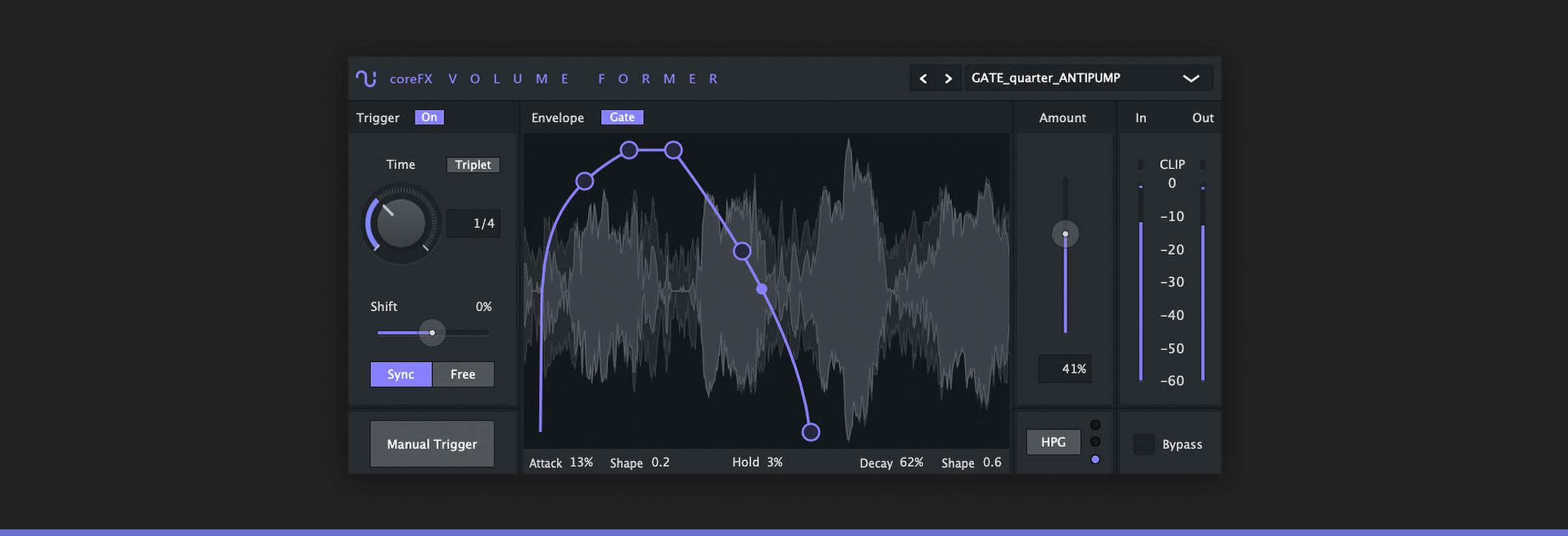
How to Choose the Right Automation Plugin for Your Business
Choosing the right automation plugin for your business can feel overwhelming with so many options available. Here are some key factors to consider to ensure you make a choice that aligns with your marketing goals.
Determine Your Needs: Start by evaluating what specific tasks you want to automate. Are you looking to manage email campaigns, schedule social media posts, or track customer interactions? Having a clear understanding of your needs will help you narrow down your options.
Integration Capabilities: Ensure that the plugin you choose seamlessly integrates with your existing tools and platforms. Most businesses use a combination of software for CRM, email marketing, and analytics. Look for plugins that offer:
- Built-in integrations with popular tools (e.g., Mailchimp, HubSpot)
- API access for custom integrations
- Compatibility with your WordPress theme and other plugins
User-Friendliness: The user interface of the plugin plays a vital role in its effectiveness. A complicated interface can lead to frustration and wasted time. Opt for plugins that offer:
- Intuitive dashboards
- Quick setup wizards
- Comprehensive tutorials and support
Scalability: As your business grows, your marketing needs may evolve. Choose a plugin that can scale with you. Look for features like:
- Advanced automation workflows
- Customizable templates
- Multiple user roles and permissions
Cost Consideration: Budget is always a factor when selecting a plugin. Assess the value it provides in relation to its cost. Many plugins offer tiered pricing structures, so consider:
- Free trials to test functionality
- Monthly vs. annual subscription options
- Hidden costs for premium features
| Feature | Plugin A | Plugin B | Plugin C |
|---|---|---|---|
| Ease of Use | ⭐⭐⭐⭐⭐ | ⭐⭐⭐⭐ | ⭐⭐⭐⭐⭐ |
| Integration Options | 30+ tools | 20+ tools | 15+ tools |
| Scalability | High | Medium | High |
| Price Range | $10-$50/month | $15-$60/month | $12-$45/month |
Customer Support: Lastly, consider the level of support the plugin offers. Good customer service can save you time and headaches down the line. Look for:
- 24/7 support options
- Active user forums
- Regular updates and feature improvements
By taking the time to assess these factors, you can choose an automation plugin that not only enhances your marketing efforts but also supports your overall business growth.

Real-Life Success Stories: Brands Thriving with Automation

Tips for Maximizing the Benefits of Your Automation Plugins
To truly harness the power of your automation plugins, you’ll want to think strategically about their implementation. Start by clearly defining your goals. Whether it’s increasing email open rates, improving social media engagement, or streamlining your content management, knowing your objectives will help you select the right plugins and set them up for success.
Integrate for Seamlessness: Ensure that your automation plugins work harmoniously with existing tools and platforms. A plugin that plays well with your CRM, email marketing software, and analytics tools can save you time and enhance your campaign effectiveness. Look for integrations that allow for smooth data transfers, reducing the risk of errors.
Customize Your Settings: Most automation plugins come with a myriad of customizable settings. Don’t just stick with the default configurations. Explore options such as segmenting your audience, personalizing messages, and scheduling posts at optimal times. Tailoring these settings to fit your audience’s preferences can significantly boost engagement rates.
Monitor Performance Metrics: Regularly analyze the performance of your automation efforts. Most plugins provide analytics dashboards that can help you track key metrics. Set up a routine for reviewing these metrics, focusing on your conversion rates, open rates, and engagement levels. This will allow you to fine-tune your campaigns based on real data.
Experiment and A/B Test: Don’t be afraid to experiment with different strategies. A/B testing is an invaluable tool in your automation arsenal. Try out different subject lines, call-to-actions, or even designs to see what resonates best with your audience. Use the insights gained from these tests to optimize future campaigns.
| Plugin Feature | Benefit |
|---|---|
| Automatic Scheduling | Post at peak engagement times without manual intervention. |
| Audience Segmentation | Target messages to specific demographics for higher relevance. |
| Performance Analytics | Gain insights to continuously improve your marketing tactics. |
Stay Updated: The world of automation is ever-evolving. Regularly check for updates from your plugin providers, as they often release new features or improvements. Keeping your plugins updated not only ensures that you are leveraging the latest technology but also helps protect your site from potential security vulnerabilities.
Engage with the Community: Join forums and groups related to your specific plugins. Engaging with other users can provide you with tips, troubleshooting advice, and innovative ways to use your plugins that you may not have considered. Learning from the experiences of others can save you time and enhance your own strategies.
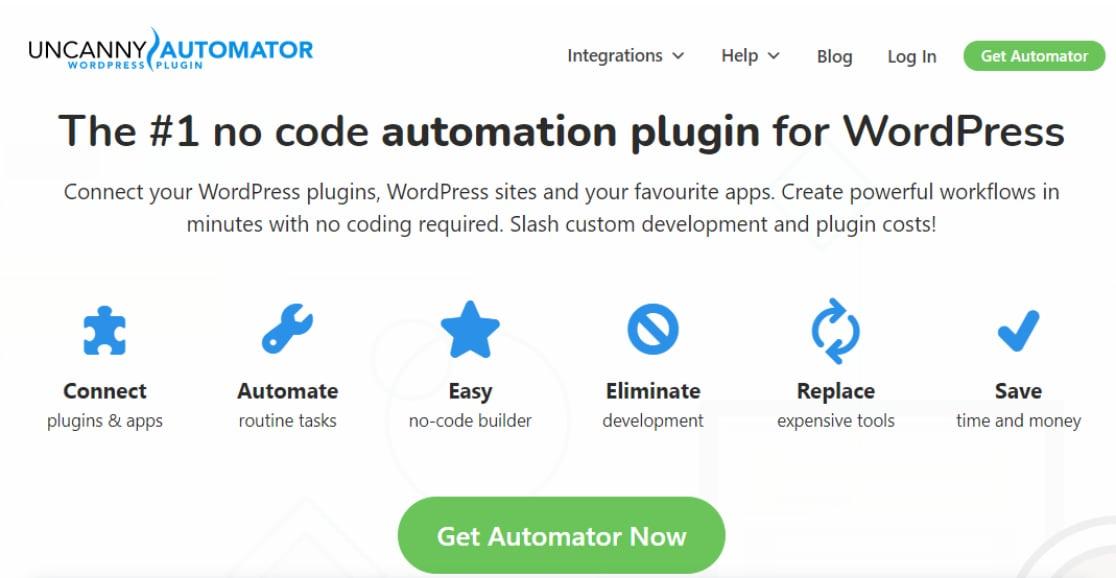
Getting Started: A Step-by-Step Guide to Implementation
Implementing automation plugins can dramatically transform your marketing efforts, making them more efficient and effective. The first step is to determine your specific needs. Consider what tasks you want to automate, whether it’s email marketing, social media posting, or customer relationship management. Knowing your objectives will guide you in selecting the right plugin.
Next, explore the features of each plugin on your shortlist. Look for functionalities such as:
- Ease of Use: The interface should be user-friendly, allowing you to set up and manage campaigns without a steep learning curve.
- Integration Capabilities: Ensure that the plugin can seamlessly integrate with your existing tools and platforms, like WordPress, CRM systems, and social media channels.
- Analytics and Reporting: Choose plugins that provide insightful analytics, helping you track the performance of your automated campaigns.
After narrowing down your options, take advantage of free trials or demos. This hands-on experience can be invaluable in assessing how well a plugin meets your needs. During this phase, pay attention to:
- Functionality: Test out key features to see how they work in practice.
- Customer Support: Reach out to support with questions or issues to gauge their responsiveness and helpfulness.
- Community Feedback: Check online reviews or forums to see how other users feel about their experiences.
Once you’ve selected the right plugin, it’s time to install and configure it. Follow these steps:
- Download and install the plugin from the WordPress plugin repository.
- Activate the plugin and navigate to its settings page.
- Customize the settings based on your marketing goals.
- Connect any third-party accounts (like social media or email services) as required.
start creating your automated campaigns. Begin with one or two simple automations to test the waters, such as:
- Automated welcome emails for new subscribers.
- Scheduled social media posts to maintain a consistent online presence.
As you become more comfortable, gradually expand your automation efforts. Regularly review your analytics and make adjustments based on the data. This iterative process will help you refine your approach and maximize the effectiveness of your automated marketing strategies.
Frequently Asked Questions (FAQ)
Q&A: Top 5 Automation Plugins to Enhance Your Marketing
Q: What are marketing automation plugins, and why should I consider using them?
A: Great question! Marketing automation plugins are tools that help streamline and automate various marketing tasks, from email campaigns to social media management. By using these plugins, you can save time, reduce manual effort, and improve the precision of your marketing efforts. They allow you to nurture leads, segment your audience, and deliver personalized content, all while freeing you up to focus on strategic initiatives.
Q: Which automation plugins are considered the top five for enhancing marketing efforts?
A: There are several fantastic options out there, but here are our top five picks:
- HubSpot: This all-in-one platform offers tools for email marketing, social media, and lead management. Its user-friendly interface and powerful CRM capabilities make it a favorite among marketers.
- Zapier: This plugin lets you connect different apps and automate workflows without any coding. For instance, you can automatically add new email subscribers to your CRM or send alerts when certain conditions are met.
- Mailchimp: Known for its excellent email marketing capabilities, Mailchimp also offers automation features that allow you to send targeted campaigns based on user behavior, making your outreach more effective.
- Hootsuite: If social media is your playground, Hootsuite is a must-have. It allows you to schedule posts, monitor engagement, and analyze your performance across multiple platforms — all from one dashboard.
- ActiveCampaign: This tool combines email marketing, automation, and CRM functionalities, allowing you to create sophisticated customer journeys and track user interactions seamlessly.
Q: How do these plugins improve my marketing efforts?
A: Each of these plugins offers unique features that can significantly boost your marketing strategy. They help you:
- Enhance Efficiency: Automate repetitive tasks, allowing you to focus on creative strategies and high-impact activities.
- Personalize Engagement: Deliver tailored content and messages based on user behavior and preferences, increasing conversion rates.
- Track Performance: Gain insights through analytics and reporting, helping you to refine your strategies over time.
When you leverage these tools, you’re not just working harder; you’re working smarter!
Q: Are these plugins easy to integrate with existing systems?
A: Absolutely! Most of the plugins mentioned have user-friendly interfaces and offer extensive documentation to help you integrate them seamlessly into your current workflows. Plus, many of them offer integrations with popular tools and platforms, so you can easily connect your existing systems without a hitch.
Q: Is there a cost associated with these plugins, and are they worth the investment?
A: Yes, while some plugins offer free versions or trials, premium features typically come with a cost. However, the investment is often justified given the time saved and the potential for increased revenue. By automating tasks and improving your marketing strategies, these tools can provide a significant return on investment.
Q: What’s the best way to get started with these automation plugins?
A: Start by identifying your marketing goals and the specific areas where you feel automation could make a difference. Then, explore the features of each plugin and consider a trial to test them out. Don’t hesitate to take advantage of tutorials and resources offered by each tool to get the most out of your experience!
Q: Can I use multiple plugins together?
A: Definitely! In fact, using a combination of these plugins can create a powerful marketing ecosystem. For example, you can use Zapier to connect your email marketing tool with your CRM to ensure that your leads are seamlessly managed across platforms.
By leveraging these top 5 automation plugins, you’ll not only enhance your marketing efforts but also set your business up for sustainable growth. Are you ready to dive into the world of automation? Let’s get started!
Concluding Remarks
As we wrap up this exploration of the top 5 automation plugins to enhance your marketing, it’s clear that the right tools can make a world of difference in how we engage with our audience. Embracing automation isn’t just about saving time; it’s about elevating your marketing strategy to new heights. Imagine streamlining your processes, personalizing customer interactions, and ultimately driving more conversions—all while freeing up your creative energy to focus on what really matters.
Now that you’re equipped with insights into these powerful plugins, it’s time to take action. Whether you choose one, two, or all five, integrating these tools into your marketing arsenal can lead to remarkable results. So why wait? Dive in, experiment, and watch your marketing efforts transform.
Remember, the future of marketing is not just about working harder, but working smarter. Make the leap today, and let automation take your strategies to the next level. Happy automating!



